Over $250 Million Recovered
RANKED’S #1 LYFT ACCIDENT LAWYERS
We Fight Hard So You Win Big
Over $ Million Won
No Fees Unless We Win for You

+
$ Million
24/7

Over $250,000,000 Million Recovered

-
Proven Track Record
Over time, we’ve won thousands of cases securing millions for our clients. 
-
Decades of Experience
We have 30+ years of experience and knowledge to fight for our clients. 
-
Multi-lingual Legal Experts
Communication is key and our bilingual staff is glad to talk w/ you! 
-
Available 24/7/365
Count on us to be there, in-person or by phone anytime of the day, 365 days a year!
AWARD-WINNING RIDESHARE ACCIDENT LAWYERS
If you wish to file a lawsuit after suffering injuries. Call us immediately. No Upfront Cost. Free Case Review. We fight you win.
-
 SALAR HENDIZADEH, Esq.View Profile
SALAR HENDIZADEH, Esq.View ProfileSenior Trial Attorney
-
 John Rofael, Esq.View Profile
John Rofael, Esq.View ProfileAttorney
-
 DANIEL AZIZI, Esq.View Profile
DANIEL AZIZI, Esq.View ProfileSenior Trial Attorney
-
 NINA SARGSYAN, Esq.View Profile
NINA SARGSYAN, Esq.View ProfileAttorney
-
 FARID YAGHOUBTIL, Esq.View Profile
FARID YAGHOUBTIL, Esq.View ProfileSenior Trial Attorney
-
 IGOR FRADKIN, Esq.View Profile
IGOR FRADKIN, Esq.View ProfileAttorney
-
 Darren McBratney, Esq.View Profile
Darren McBratney, Esq.View ProfileAttorney
-
 AMY GOMEZView Profile
AMY GOMEZView ProfilePre-Litigation Manager
FEATURED ON TV






Call Now for Help: (855) 339-8879
What We Can Do For You




We do for you, What others can’t!




Call Us Immediately if you Experience a Personal Injury. No Upfront Costs. Free Case Review. We Fight, You Win.
Personal injury is an area of law based on damages that affect the body. Physical harm is the main predicate for these claims, and injuries can happen in any number of ways – whether in car accidents, slip and falls, and more. The case will be handled by a personal injury lawyer and will be dealt with in civil court, or ahead of time with a settlement. Contact us now.
If you have been involved in a personal injury, you are entitled to compensation for your injuries. You can contact a slip and fall lawyer to help you pursue adequate restitution to cover your medical expenses and lot income. The best personal injury lawyer can be found at the DTLA Law Group. We serve all of California with numerous offices located across the state.
Our Top Injury Law Firm will fight to get you the maximum compensation for your injury damages. Only an experienced attorney will be able to win you the fullest extent of coverage for your accident claim. It is recommended to pursue a premise liability injury lawyer that can negotiate with insurance companies and navigate claims properly. When you come to the Downtown LA Law Group, you will be represented by a slip and fall attorney that has your best interests at hand. We handle various types of injury claims, including slip and fall accidents, electrocution accidents, construction incidents, car accidents, and more. No matter if you were injured in Los Angeles or elsewhere in California, the Downtown LA Law Group will be able to assist you with your personal injury claim. We are headquarter In Los Angeles but have offices all over or can come to you.
Did You Know That Lyft Has $1,000,000 Insurance Policy?
Common Questions
- What do I need to use Lyft? You will need a smart phone like an Android or iPhone, a payment method as a passenger, and various required documents as a driver.
- Does Lyft operate all night? Lyft drivers work according to their own schedules, and may or may not be available throughout all hours of the night. It is to be expected that later hours will yield longer wait times, as fewer drivers will be available.
Lyft works based on a GPS locating system that connects riders to nearby drivers. It shows a map of cars and the directions they are heading. Drivers can elect to accept certain rides or deny them. To use Lyft, follow these steps:
Download the app onto your smart phone via the Google Play store, App Store, or other location. Make sure you have ample space and that you allow the app to send you notifications.
Input your information and payment details, such as your name, email address, credit card or PayPal information, and phone number. By providing your phone number, the driver will be able to call you if he has any questions or concerns, or to tell you that he has arrived if you are not outside.
When you are ready to take a trip, input your destination. There will be a number of cars displayed, as well as an estimated time of arrival. You may also schedule a ride for a later time.
Select what kind of ride you want, whether a Pool ride, UberX ride, Uber Select, and more.
If you select a Pool, you will likely have to walk to a nearby pick up point. You will then need to confirm this point with the app.
Upon getting picked up, you can enjoy your ride, rate your driver at the end, and leave a tip if you so choose.
Uber’s rating system is integral to drivers. A low rating may result in the driver getting suspended or barred from using the app, while a high rating can eventually allow the driver to offer other types of rides for customers. The drivers must maintain these ratings to continue to provide higher-end trips. At the same time, drivers can rate customers based on their behavior and attitude, as well as if they caused any delays or if they were rude to other passengers. A low rating may cause other drivers to be more cautious while picking up such riders.
Drivers for Uber must meet certain requirements to be eligible to give rides to customers. They must meet the minimum driving age in the city of choice, have one year of licensed driving experience in the US (or 3 years if the driver is under the age of 23), have a valid US driver’s license, and must possess an eligible 4-door vehicle. They must also have proof of residency in the city and state, proof of vehicle insurance, and a clean background check.
The company tries to prioritize safety for both drivers and passengers. Drivers are thus given access to an emergency assistance button that allows drivers to quickly share their trip information and location with emergency services in the event of an incident; incident support with a representative at Uber; trip sharing that allows drivers’ friends and family to know where they are at all times, so as to prevent any potentially dangerous situations; GPS tracking to ensure that trips do not go off route or into unknown areas; and detail anonymity, such as masking phone numbers and only providing first names.
Common Questions
- Who is responsible for most Lyft accidents? Human error accounts for over 90% of automobile crashes, so an Lyft driver or third-party is most likely responsible for the crash.
- Do I get reimbursed if my Lyft driver gets into an accident? You may receive a refund for your trip if your driver was involved in an accident.
Given that Lyft is a popular service and the company employs thousands of drivers in already-congested cities, it is no surprise that there are dozens of accidents involving the vehicles each year. Although many drivers are generally safe, there are individuals who make mistakes or carelessly operate the vehicles. Most of the time, the drivers who behave in such a manner likely drove the same way when they weren’t transporting anyone; it is no different that they are driving for money. In fact, the need to complete many fares to earn more wages is a primary factor in many Lyft crashes.
Other causes of Lyft accidents include:
Speeding
Lyft drivers may drive recklessly by speeding, which can create dangers for many people on the road. Speeding vehicles have a harder time coming to a stop and drivers have less time to react to sudden dangers on the road, such as cars turning from hidden driveways, vehicles merging, animals darting into the street, pedestrians crossing at crosswalks that aren’t at lights, and more. Lyft drivers who speed in residential areas run the risk of injuring more pedestrians, children, and homes, while Lyft drivers who speed on highways and freeways raise the chances of severe or fatal injuries in crashes.
Tailgating
Tailgating is the act of driving too closely to other vehicles, which can cause rear-end accidents due to being unable to stop in time. It can sometimes be viewed as an act of aggression, but often, drivers tailgate because they are in a hurry and believe that they are getting closer to their destinations. It does not actually result in arriving faster; in fact, tailgating and having to constantly brake and ease up has been shown to create more traffic than it alleviates.
Running Led Lights
Lyft drivers may run red lights if they are in a hurry or need to get to a destination before a deadline. For example, there are times when drivers need to get their passengers to the airport to catch a flight, and they take many risks and chances to arrive on time. It is also common for Lyft drivers to go through red lights when caught a bit in the intersection or when proceeding through a jammed or packed yellow. Continuing through a light that has already changed is dangerous, and drivers from the opposing direction could get involved in accidents very easily.
Improper Merging
It is common for Lyft drivers to go out in packed or traffic-ridden areas, which are usually filled with people who do not exert a lot of courtesy. This forces Lyft drivers to be more aggressive and force their way into lanes if they want to enter or exit. Some individuals refuse to give up space, and Lyft drivers will try to fit in the gaps. In slow-moving traffic jams, this may simply result in a sideswipe or a less damaging accident, but on freeways where there are plenty of cars traveling at high speeds, an improper merge can lead to a fatal accident. The Lyft driver may signal too late, merge too slowly, or cut someone off, which can cause someone in the lane to hit the vehicle.
Running Stop Signs
One of the most common violations that Lyft drivers commit on the road is running stop signs. Not every driver runs a stop sign by fully blowing through it and not even coming to a stop. In fact, many Lyft drivers simply come to a rolling stop and then proceed as normal. This can be problematic – driving through a stop sign prematurely can throw off the flow of traffic and cause accidents among those who believe they have the right of way.
Right of Way Violations
It is important that drivers acknowledge who has the right of way, but Lyft drivers sometimes overstep boundaries and try to ignore the courteous and rightful way in traffic. For example, individuals who have to turn left into oncoming traffic should wait for an appropriate break or for the cars to slow down for them. By speeding through the turn, the other drivers must quickly brake, which can create a chain reaction of accidents, including rear end crashes and swerving.
Parking Lot Crashes
Lyft drivers often drop people off in parking lots and parking structures if the passengers make special requests. There are very low speed limits in parking lots and Lyft drivers must constantly be aware of people pulling out of narrow spaces, coming around tight corners, and walking from in between vehicles and out of doors. Lyft drivers who do not pay close enough attention or who speed in parking lots can easily crash.
Drunk Driving
Some Lyft drivers make poor decisions and decide to go driving after having a few drinks. This is extremely risky and dangerous, as it doesn’t only place the drivers themselves in danger, but also places the lives of everyone nearby at risk. Drunk Lyft drivers have lowered inhibitions, poorer reaction time, and may pass out while behind the wheel. It is illegal to drive with a blood alcohol level of 0.08% or higher, but because Lyft drivers have passengers and are driving commercially, they are held to the lowered standard legal limit of 0.04%.
Tired Driving
Another huge issue with Lyft drivers and accidents is the fact that many drivers tend to go on the road while tired or exhausted. Fatigued drivers are equally as dangerous as those who have ingested alcohol; falling asleep at the wheel can cause a vehicle to veer off the street or swerve into oncoming traffic. Drivers may get behind the wheel to pick up Lyft customers after having long shifts at their primary jobs or after traveling for some time; others will work long shifts that drain their energy.
Using Phone While Driving
There are some instances in which Lyft drivers must use their phone, such as when they approve new passengers to join the ride. However, there are times when Lyft drivers simply excessively use their phones, such as by remapping or rerouting their GPS directions, replying to text messages or emails, contacting passengers, and more. Texting while driving or using the phone while driving is extremely dangerous, and it is crucial that Lyft drivers be held accountable for their actions. Passengers can give low ratings and file complaints if the driver does not drive with any regard for safety.
Vehicle Maintenance
Lyft vehicles must adhere to certain standards. If drivers do not take care of the cars, they can be barred from driving for the company. Of course, most of the time, there are no specific Lyft engineers or quality assurance workers who travel around the different cities and inspect cars. Improperly maintained vehicles can cause sudden accidents; there can be brake failure, engine trouble, broken lights, no seatbelts, fan belt issues, radiator problems, improperly filled tires, and more.
Weather
Poor weather contributes to more Lyft accidents than one would expect. The presence of fog, rain, snow, sleet, storms, haze, and other such conditions can make driving very difficult. Not only does it become more problematic to actually operate the vehicle because of slick roads, but there is also the risk of how other drivers will handle the weather. Even Lyft drivers who are extremely careful and defensive in poor weather may be hit by someone who was going too fast through the fog or who was speeding in the rain.
Common Questions
- Will Lyft cover my injuries if I was hurt in an accident? Yes, liability for injuries to third parties is covered under Lyft’s insurance.
- How dangerous are Lyft rides? Lyft rides are no more or less dangerous than any other drive you would take.
An Lyft crash can range from being a mere fender-bender with no apparent or serious injuries to a multi-car pileup with numerous fatalities. Some accidents that may appear to have severe consequences may actually yield no damage at all, while seemingly innocuous crashes could result in heavy injuries. Some of the various injuries that have resulted from Lyft accidents include the following:
Bone Damage
Fractures, breaks, cracks, and crushing injuries can all permanently affect the way you use your body. A broken bone may not set properly and heal wrong, which could limit the range of motion for the rest of your life despite physical therapy and repairs. Broken bones and other damages can also increase the amount of time you spend recovering and could easily put you out of work for weeks. Crushing injuries could also shatter the bone and leave it permanently disfigured; victims may suffer crushing injuries when their hands, feet, and other body parts are caught between the vehicle and the seat, door, window, and more.
Muscle Injuries
Sprains, strained muscles, tears, and more can damage numerous parts of your body. Knee injuries, such as LCL, ACL, and MCL tears, can take months to properly heal, and in that time, you may be extremely sensitive and suffer a lot of pain while walking. You could suffer a torn rotator cuff, which is an extremely common shoulder injury in Lyft accidents as your shoulder is directly next to a door.
Brain Injuries
The sudden impact can cause your head to crash off the window or steering wheel, and even moderate damage can cause irreversible brain damage. Victims may suffer concussions, which can cause haziness, dazed behavior, memory loss, dizziness, trouble concentrating, sensitivity to light and sound, and more. A concussion – or worse, a traumatic brain injury – can make victims unable to drive or work. Closed head injuries, such as brain bleeds, cracked skull, and others, can also be detrimental to brain health.
Internal Injuries
Because of how vicious an Lyft accident can be, some victims may suffer intense internal damage. There may be bleeds, liver damage, kidney damage, heart trouble, collapsed lung, intestinal injuries, and more. Some of the injuries may be exacerbated during treatment or may occur as a result of surgery. Of course, if an organ is removed, it could lead to a change of life; removal of a gallbladder may not change much, but removing part of a lung can drastically impact day to day activities and recreational habits, if not job capabilities.
Neck and Spinal Cord Injuries
Neck injuries are common in Lyft accidents because of how fragile the neck is. A crash can cause whiplash which is a condition where the neck suddenly swings due to impact. There can also be spinal cord injuries; spinal cord injuries are extremely problematic because of how crucial the spinal cord is to movement and for transmitting information to the rest of the body. There is the chance that the discs in the back will get herniated or slip out of place in the accident. If these disc issues do not get resolved, treatment can eventually necessitate surgery, which would require the discs to be fused to the spine, thus preventing mobility and increasing stiffness.
Severed Limbs
Circumstances in Lyft crashes can cause victims to lose limbs and digits. Some people may have their hands and arms outside of the window when they are struck by a vehicle and others may have their legs pinned or crushed beneath broken seats or caved-in doors. The limbs may not get any blood flow and may have the tendons, bones, nerves, and other crucial parts mangled beyond repair. There may be no hope for repair and only a prosthetic limb can be used to return to normal. These victims may have to live with phantom pain, lingering nerve damage, and more. They will also need intense and lengthy physical therapy and must learn how to live without a limb, which could completely change their lives. Additionally, prosthetic limbs and treatment for such injuries can be extremely costly, and health insurance may max out and not cover all the expenses eventually.
Permanent Injuries
Although severed limbs are permanent injuries from Lyft accidents, there can also be burns that result in scarring, facial damage like loss of eyes, need for facial reconstruction, coma and brain damage, and more. These permanent injuries wreak havoc on family and friends, and victims will never be the same as they were before.
Paralysis
Paralysis can take on many forms. In the least impactful cases, only parts of the body are paralyzed or numb, such as fingers and toes. However, the more intense forms of paralysis include paraplegia, which is the loss of function in the legs, and quadriplegia, which is the loss of function of all limbs and body parts below the neck. Those suffering from paralysis are often confined to wheelchairs and must learn to adapt to a new lifestyle. Their homes must be restructured or have additions tacked on, they must purchase new vehicles that are handi-capable, and much more.
Death
There are over 30,000 deaths per year from car accidents, and Lyft accidents themselves have resulted in many different crashes where individuals have passed away. Victims have died at the scene of the accidents and have also perished in the aftermath during treatment from lingering damage. They may have suffered extreme bodily trauma, loss of blood, brain damage, and more.
Many similar injuries can also occur if you fall from an Lyft Jump bike or scooter or if you are struck by these vehicles. In the event that you are struck by an Lyft car while walking on the street, you could suffer much worse damages. Pedestrians are not as protected as passengers in vehicles; they do not have seatbelts, cushions, and other forms of safety. These individuals may be left in worse conditions and could be hit by other vehicles passing by.
Common Questions
- If I can’t take pictures at the scene of the accident, can someone else do it for me? Yes, you can have a friend or witness take photos for you.
- What if the Lyft driver doesn’t report the incident? You should always make sure to report the accident to Lyft just in case the driver tries to hide it to prevent any action, such as getting barred from driving or from paying an insurance claim.
It may be very confusing to act appropriately after an Lyft accident. You could be troubled, hurt, or unsure of how to proceed. It is crucial that you do not leave the scene of the accident no matter if you are a passenger, Lyft driver, or other individual involved in the crash. You should stay until the police arrive or until you have gathered appropriate evidence and information. Fleeing the scene of an accident is a crime, and you could be hit with legal consequences, ranging from a misdemeanor to a felony.
The general steps to take after an Lyft accident are essentially the same no matter what position you were in. Some may differ slightly, but not too extremely.
- In the immediate aftermath of an Lyft accident, get medical attention as quickly as you can. Victims may sometimes not feel as though they have been severely injured or may not notice certain injuries. Paramedics called to the scene of the accident can check your health and determine how hurt you are. You may be transported to the emergency room for urgent surgery and treatment, or you may simply be able to go home and see a doctor later. If you plan to file a lawsuit, this initial period of medical attention is extremely important to your case. If there is a noticeable gap between the accident and the treatment you received at the doctor’s office, the insurance agent handling the claim could state that you were not as injured as you proclaimed or that you were hurt in another incident and you are trying to use the Lyft crash to collect compensation for separate injuries.
- You should have ample proof of your medical treatment and the damages you suffered. The hospital or healthcare facility will give you a receipt or a bill that details the services you had done at the hospital. You may also request to keep the notes from the paramedics.
- In addition to medical proof of your damages, you should also have ample documentation and photos. You should take pictures and videos from different angles and at different times after the accident. If you can show how injured you were and the extent and impact of the injuries, your evidence will be much stronger.
- Ample photos that also document the circumstances of the case can be worthwhile for your evidence. You may take photos of the scene of the accident to show a few problems or issues. For example, the road may have had a large pothole in it or there may have been debris in the street. There may not be adequate lighting from street lamps and there could have been bad weather that completely clouded vision or caused the environment to become dangerous to drive through. You can also document the state of the vehicle and the damage to any other cars or objects. This can serve as a way to identify the angle of impact, and thus, some degree of responsibility. For instance, if the Lyft vehicle were rear-ended, you should photograph the rear of the car and the front of the other one.
- If you were a passenger or a driver, your Lyft app will have the details of the trip. You should screenshot the trip information, name of all parties involved, and the payment information. This information will show that you were a rightful customer or lawful driver in the incident.
- Beyond the information gathered on the Lyft app, you should collect necessary contact details and insurance details from those involved. Drivers should exchange information and parties should be sure to file a claim in a speedy and efficient manner.
- There were likely other individuals nearby who saw the accident happen. They may have been at store, walking on the street, or even been in other cars as passengers. You should interview these eyewitnesses and take down their statements and testimonies to have additional evidence for a claim. This will cut out a lot of the dissenting opinions on who was responsible and who was carelessly driving. In addition to bystanders, you could ask nearby businesses if they had security cameras installed; the surveillance footage could show the incident happen and provide crucial evidence.
- In some Lyft accidents, especially those that occurred on the freeway or resulted in physical injuries and the presence of paramedics, the police may come to the scene. They will likely conduct an investigation to see if there were any criminal activities; for example, one of the drivers may have been under the influence of drugs or alcohol or he may have committed some kind of violation while driving. The police will interview all those involved and will file the report at the station. Once it has been finalized, you can ask for a copy of the report.
- You should alert Lyft to the accident so that they cannot deny any liability or knowledge of it. There is a section on the app that allows you to report a serious incident involving a driver. You must provide the date, time, and location of the incident, as well as the rider or driver name. Other additional details can be submitted.
Common Questions
- What are my rights if I am on the road? Essentially, all individuals on the road are entitled to a safe trip and must not be placed in harm’s way by any drivers or operators of vehicles.
- In Lyft accidents, there are different people who can be affected. Let’s look at some of them.
Lyft Drivers
Lyft drivers can be involved in accidents the same way that other individuals are. They may be hit from behind, cut off, sideswiped, T-boned, and more. In the event that there is an accident with another car, Lyft drivers can take legal action against the responsible party’s insurance agency to receive compensation for their damages. If the responsible driver does not have adequate coverage, the worker can turn to Lyft for coverage options. This uninsured/uninsured motorist coverage allows Lyft drivers to have some medical bills paid and for their vehicles to be repaired if the opposing drivers flees or if he cannot pay the full extent of the damages.
Lyft Passengers
Lyft passengers are almost never at fault for an accident given the fact that they are merely customers in the service. They may have been asleep, on their phones, intoxicated, or otherwise minding their business when the accident happened. Regardless of who caused the crash – an Lyft driver or another vehicle – the passenger could be aptly reimbursed for subsequent damages. He can take legal action against the opposing driver if a third-party hit the car; he could also take action against the Lyft driver himself; or he could potentially file a lawsuit against the company.
Third-parties
Third-parties are those not directly involved in the Lyft ride but are affected in the accident. If your Lyft driver crashes into another vehicle or an individual, the affected individual is the third-party. It is possible that a third-party can take legal action against Lyft for the actions of the driver, especially if there were severe injuries as a result of the incident.
Common Questions
- Can I sue Lyft if I was not injured in an accident? You cannot file a personal injury lawsuit if you were not injured in the Lyft accident.
- Lyft can be held liable for injuries and accidents in a few ways. The company has a process that must be adhered to and if they breach the duty of care they owe to their customers, they can be legally responsible for the ensuing damages.
Lyft must take care when hiring drivers. There is no interview process; the entire hiring process is done through the smartphone app with the prospective driver uploading and submitting all the relevant documents and information. Lyft will run the documents through systems and order a background check on the driver. However, the background check only dates back 7 years; anything done before that point will not show up. As a result, many drivers are allowed to drive despite having old records of reckless or careless driving, felonies, drunk driving incidents, history of assault and violence, and more. By allowing these individuals to get behind the wheel and be placed in situations with potentially defenseless customers, Lyft can be held responsible for their actions.
When an Lyft driver gets into an accident or causes a crash, assaults a passenger or places someone in danger, or otherwise behaves in a way that is unsatisfactory and can cause injuries, he will be removed from the app and barred from driving. However, Lyft has been known to reinstate drivers or else not ban them at all despite claiming that they would do so. This is troublesome, as it allows drivers the ability to continue with their actions and go unpunished. They can place additional people in danger by being allowed to remain on the app. Lyft has been known to do this in the past because of its lack of drivers and desire to secure more income. The more drivers it has on the road, the more fares can be picked up, and thus, the more profit that can be earned.
Common Questions
- Do I need an attorney to sue Lyft? It is highly recommended that you hire an attorney if you wish to sue Lyft, as many people do not have the necessary legal acumen or negotiating knowledge required to win a case.
Armed with the knowledge of what you should do after an Lyft accident and how to acquire all your necessary evidence, you should be aware of how to file a lawsuit against Lyft. As stated above, there must be a certain duty of care present as well as a breach if you wish to file a claim based on negligence. All personal injury lawsuits are based on such negligent action of the responsible party. The points of negligence that must be proven are as follows:
- You were owed a duty of care by the responsible party
- The duty of care was breached in some manner
- The breach of duty led to an accident or incident
- The accident or incident resulted in actual physical injuries
It is important to understand each point comprehensively. All drivers on the road owe everyone else a duty of care to not harm them or place them in danger. This is doubly true for Lyft drivers – they must not place other drivers or pedestrians in danger, but they must also protect their passengers and customers explicitly.
The duty of care can be breached by breaking the law or violating road rules. This action can place any number of people in danger, even those who are not on the road.
The breach of duty must have directly caused an accident. If the breach occurred but it did not contribute to a crash, the driver won’t be held responsible, or will not be held responsible to the same extent that another party would be.
Lastly, the presence of physical injuries from the accident is extremely important if you wish to file a personal injury claim. If you weren’t hurt in such a manner, you will not be able to file a claim seeking compensation for medical expenses or other damages. Instead, you will only be able to pursue damages for the loss of property and loss of wages you suffered.
Fortunately, if you plan on pursuing an insurance claim against Lyft, you may have more success if you were not injured. You also may not need an attorney to litigate the case for you. The reason is simple: a mechanic’s estimate and a copy of your pay stub may be enough to display your losses, and you could simply negotiate a fair deal from the insurance agent yourself. Agents will be more responsive to claims that do not lead to them giving up large sums of money, and they would rather focus their efforts on other claims that are rife with injuries and could result in huge payouts.

Nationally Recognized Leaders in Personal Injury Lawsuits


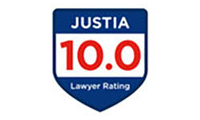

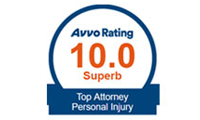


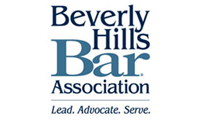




WHY CHOOSE US? EXPERIENCE – TRUST – COMPASSION

-
NO UPFRONT FEES OR COSTS
At DTLA Law, our California accident lawyers strive to earn the trust of our clients and to show prospective clients that we are strong and dedicated advocates for the injured. 
-
NO FEE GUARANTEE
You will not have to pay a single penny for your legal help until we win your case. Our Zero-Fee guarantee ensures that you have access to all the information that you need without worrying about legal expenses. Our contingency structure ensures that you will not pay legal fees until after your case is successful. 
-
99% SUCCESS RATE
For more than 25 years, DTLA LAW has been championing the rights of accident victims throughout Southern California. 
-
OVER $250 MILLION RECOVERED
We have obtained hundreds of millions of dollars for victims of accidents, including sidewalk accidents, slip and fall accidents, and other personal injury cases.
Speak with a Lawyer About Your Case Now! Free Case Review
– Over $250 Million Recovered –
California’s Top Rated Injury Law Firm.
– Over $250 Million Recovered –

Basis of a Claim
In order to file a lawsuit, you must be aware of the concept of negligence. You will only be able to win your personal injury case if you can prove that the opposing party was negligent in his duties and caused you harm. Negligence can be established as true via the following four points:- You were owed a duty of care
- The duty of care was breached
- The breach caused an injury
- The accident resulted in physical harm
What Our Clients Say

by Jenny N Los Angeles, CA
★ ★ ★ ★ ★ 5/5

by Vanessa C Los Angeles, CA
★ ★ ★ ★ ★ 5/5

by Rey R Los Angeles, CA
★ ★ ★ ★ ★ 5/5
*Results may vary
With Personalized Service from DTLA Law Group, You Don’t Have to Fight Alone!
At DTLA Law Group in California, we believe that many injuries are not caused by accidents. In fact, they’re a sequence of events that happened because someone, somewhere, was negligent in his duty of care to the public. When a driver doesn’t pay attention, he made a choice to not watch the road, and when an employee doesn’t fix a leaky cooler, he made a choice to shirk his duties. Violation of this duty of care can lead to incidents and injuries, all of which contribute to negligent action. Negligence is the basis of personal injury law, and our California law firm knows these laws and regulations inside and out. We always aim to bring justice to victims of negligence and will passionately fight for every cent that you deserve. Our lawyers have decades of experience among them, both in negotiations and in court. We have consistently topped the list of premier law firms in Los Angeles, and our remote offices serve various locations around California, including San Francisco, San Diego, San Jose, Sherman Oaks, Sacramento, and Riverside. We handle numerous aspects of personal injury law, from product liability lawsuits to rideshare accidents, and we have recovered hundreds of millions of dollars for those suffering damages ranging from emotional scarring to permanent injuries. Our attorneys are known for their tough litigation and negotiation tactics, and we are available to help in settlement negotiations with insurance companies across these California counties: Orange, San Bernardino, Santa Clara, Alameda, Contra Costa, Fresno, Kern, Ventura, San Mateo, San Joaquin, Stanislaus, Sonoma, Tulare, Santa Barbara, Solano, Monterey, Placer, San Luis Obispo, Santa Cruz, Merced, and Marin County.Our Most Recent Victories
$1.9 Million
Personal Injury
Our client was electrocuted while staying at a hotel. The internal wiring was faulty and not grounded properly, and our client had a sudden shock that caused burns and nervous system damage. We held the hotel and contractor responsible for the errors in the wiring.$1.2 Million
Sidewalk Injury
Our client tripped and fell on a piece of sidewalk that was improperly laid down. The sidewalk had a lip that was not flush with the rest of the ground. The government building in front of the sidewalk was responsible for its upkeep but denied liability until we challenged them in court.$950,000
Personal Injury
Our client was seriously injured when a box of merchandise fell from a shelf at a retail outlet and struck him on the shoulder. He required surgery to repair the damage and was unable to work for 9 months. The case was a success due to many witnesses and experts called on during the trial.$1.25 Million
Auto Collision
Our clients were a married couple who were struck by a tractor trailer while traveling on the freeway. Both suffered severe injuries that required surgery and caused them to be out of work for months at a time. The truck driver had been on the road for more than 12 hours, in violation of regulations. The company paid out the coverage for our clients’ debts.$1.6 Million
Pedestrian Injury
Our client was crossing the street at an intersection when he was struck by a vehicle turning right. The driver as using his phone at the time of the incident and did not yield to the red light or to the pedestrian. The serious injuries our client suffered included broken bones and paralysis of her right leg. We had all of her medical expenses and other damages completely covered.$1.2 Million
Slip & Fall Injury
Our client suffered a slip and fall injury at a supermarket. She cracked her hip on the fall and ended up suffering numerous complications that required two surgeries. Thanks to video evidence and the testimony of eyewitnesses, we won her the full amount we sought, and the supermarket was held 100% liable for the damages.California Regional Offices
- Los Angeles
- 601 N. Vermont Ave Los Angeles, California 90004
- Los Angeles
- 3460 Wilshire Blvd #950 Los Angeles, California 90010
- Bakersfield
- 2005 Eye Street, Suite 4 Bakersfield, California 93301
- Modesto
- 3430 Tully Road Modesto, California 95350
- Irvine
- 2372 Morse Ave. Irvine, California 92614
- San Diego
- 501 West Broadway San Diego, California 92101
- Ventura
- 701 E Santa Clara St Ventura, California 95816
- Los Angeles
- 1850 E 15th St Los Angeles, California 90021
- Riverside
- 7121 Magnolia Ave Riverside, California 92504
- Victorville
- 13782 Bear Valley Rd. Victorville, California 92392
- Fresno
- 5588 N Palm Ave Fresno, California 93704
- San Francisco
- 388 Market St #1300 San Francisco, California 94111
- Sacramento
- 1601 Alhambra Blvd Sacramento, California 95816
- Monterey
- 2600 Garden Rd, Monterey Monterey, California 93940


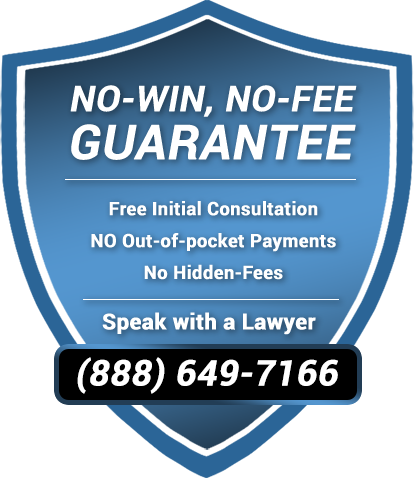
 Available 24/7/365
Available 24/7/365





































